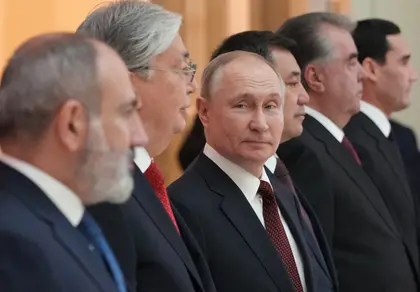Russia's imperialist aggressive war against Ukraine has led to numerous civilian casualties and mass emigration, the destruction of production facilities and business assets and damage to social infrastructure.
As a result of the war, more than 20 percent of the population of Ukraine fell into poverty. The unemployment rate is now 24.5 percent of the able-bodied population, and next year it may drop to 20-21 percent. According to the forecast of the International Monetary Fund (IMF), real wages will decrease by 27 percent in 2022 and by 2.5 percent in 2023. A high rate of unemployment and lower real incomes affect the level of consumer demand and slow down the recovery of the economy.
The estimates of real gross domestic product (GDP) losses this year range from 31.5 percent to 40 percent. In the macroeconomic context, the fall in GDP is associated with a reduction in domestic demand, a decrease in physical capital and labor force, the disruption of internal economic ties and foreign trade logistics. In 2023, the cessation of hostilities, a partial restoration of infrastructure and adaptation to the conditions of martial law are likely to be factors in the gradual recovery of economic activity. Real GDP growth rates can range from 1% to 4.5%.
The rate of inflation accelerated from 10 percent in 2021 to 30 percent in 2022. The main drivers of the inflationary surge were the limitation of domestic supply due to hostilities, the destruction of raw material/energy supply chains and the transition to more expensive substitutes, the devaluation of the hryvnia exchange rate and an increase in the cost of imported goods, price shocks of the world market for food and energy products. Most forecasts say that the inflationary wave will subside in 2023, although inflation rates will remain high - about 22 percent.

Results of the Stormy Year That Was 2022
In 2022, the export of goods and services decreased by 40 percent, which worsened Ukraine's balance of payments. However, the receipt of international grants, remittances from migrants and the freezing of debt service contributed to the stabilization of the current account. On the other hand, the outflow of foreign capital since the beginning of hostilities determined the formation of the financial account deficit. According to the results of 2022, the total balance of payments is likely to be negative and reach $5 billion.
Gross foreign exchange market reserves at the end of 2022 will amount to $25-26 billion and will be at an acceptable level. Next year, the reserves may be reduced by several billion dollars, but such a reduction will not be of a critical nature for external stability. In 2023, the receipt of international aid in the amount of $37-39 billion to support the budget will contribute to the stabilization of the situation on the forex. That's why it's not worth expecting sharp jumps in the hryvnia exchange rate next year.
Large-scale destruction and a decline in economic activity objectively affected budget revenues. Consolidated budget revenues, excluding international grants, in 2022 decreased by more than 20 percent. At the same time, real expenditure on defense increased almost six-fold, and on public order and security – two-fold. In general, real spending over the year increased by almost a third.
According to the IMF's estimate, as a result of divergent trends in income and expenditure the budget deficit has reached a colossal amount - 20.5 percent of GDP. However, in 2023, the figure is likely to decrease to 9-10 percent of GDP. The government plans to abandon the monetary financing of the budget deficit in 2023 and cover it exclusively through external borrowing and commercial borrowing on the domestic market.
To support business during the war, the government introduced lower tax rates, allowed tax deferral and transition to a preferential system with a 2 percent sales tax, and relaxed administrative requirements.
However, in 2023, the growing need for budget funds for reconstruction, overcoming the consequences of aggression, and financing social support programs (the military, their families, displaced persons, people with disabilities) will prompt the government to abandon tax breaks. In particular, it is planned to cancel the moratorium on conducting tax audits, restore the pre-war regime for those paying a 2 percent tax and prevent the abuse of a simplified taxation system by big businesses.
Tatyana Bohdan is director of research at GROWFORD Institute, an independent non-governmental Ukrainian think tank that undertakes global research in the areas of finance, economics and trade.
You can also highlight the text and press Ctrl + Enter






